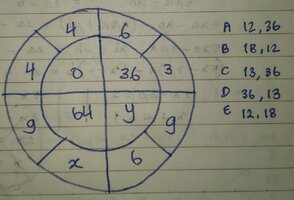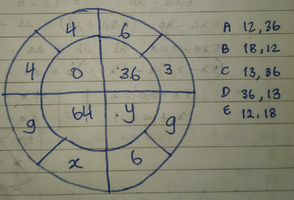that is the whole question sir, there is one additional line what is x^2 - y^2 equals to?
but I guess our problems are really in finding x and y only
Since JeffM's answer in #18 is built around
squares, it's possible that that second part is intended as sort of a hint, by focusing your attention on
squares! And you never stated
any words as part of the statement of the problem; it is always possible that some subtlety of the wording might suggest something not otherwise visible. I suspect that the wording also would have called attention to the choices and explained that they mean (x,y).
This is why we ask to see an
entire problem:
Welcome to FreeMathHelp.com! Please take the time to read the following before you make your first post. It will help you to get your math questions answered promptly and in the most helpful manner. A summary is available here, but please read the complete guidelines below at your earliest...
www.freemathhelp.com
Post the complete text of the exercise. This would include the full statement of the exercise including the instructions, so the tutors will know what you're working on. Typing exercises word-for-word also helps us identify possible mistakes in class materials. If there's a graphic or table or some other non-textual information necessary, please include a detailed description. You may upload images to our server.
Ultimately, this is a matter of respect for the people trying to help you.
But the problem, as far as we can tell so far, is defective in that there is
never certainty that "the pattern" you find is unique. The term "pattern" is not well-defined. Of course, knowing the problem is a bad one mathematically and pedagogically doesn't help you at all, other than perhaps relieving you of concern that not being able to solve it means
you are defective. You are not.



